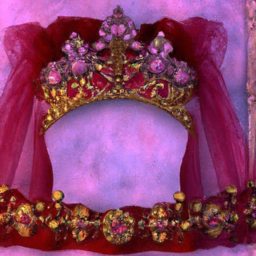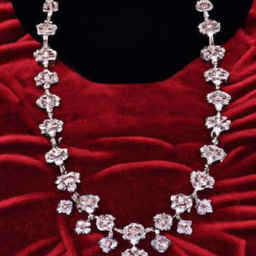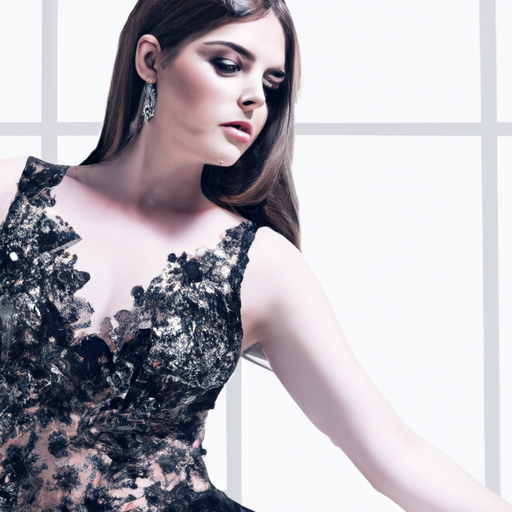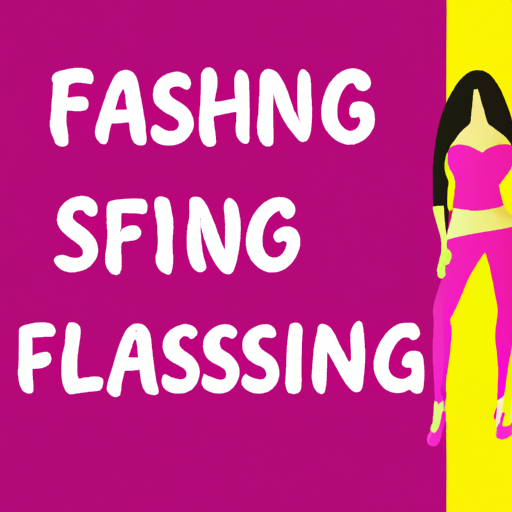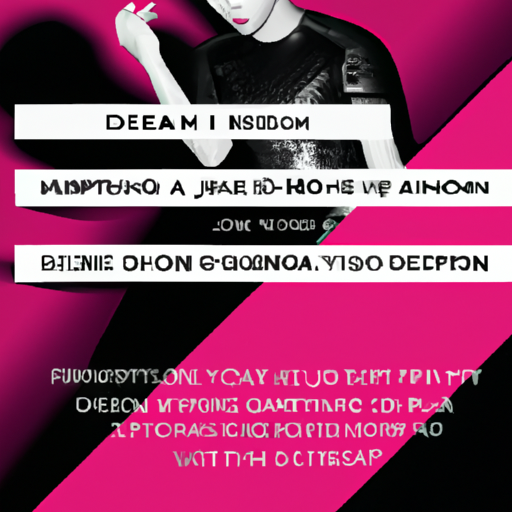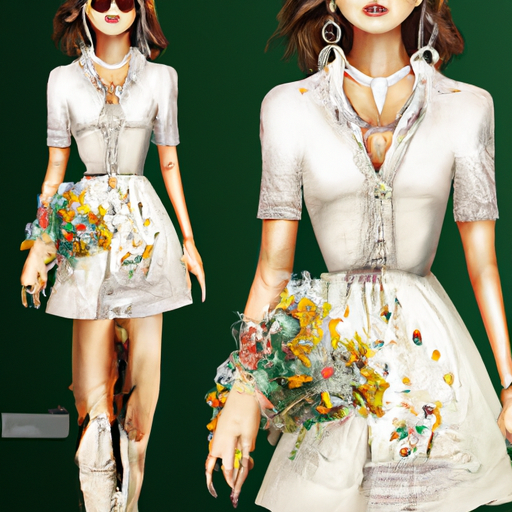Medieval Fashion Trends
Imagine a world where fashion wasn’t just about the clothes you wore, but a statement of who you were and your place in society. In the Medieval period, people expressed themselves through their clothing in ways that are both fascinating and unexpected. From vibrant fabrics to elaborate accessories, the trends of this era were nothing short of extraordinary. This article takes you on a journey back in time to discover the captivating world of Medieval fashion trends.
Table of Contents
1. Overview
Medieval fashion refers to the clothing and accessories worn during the Middle Ages, a period that spanned from the 5th to the 15th century. Fashion played a significant role during this time, not only as a means of self-expression but also as a reflection of social status and cultural norms. The clothing materials, styles, and trends varied greatly depending on one’s social class, with distinct differences between the noble, clergy, and peasant classes.
2. Clothing Materials
2.1 Natural Fabrics
During the medieval period, natural fabrics were predominantly used in clothing production. Linen, made from the fibers of the flax plant, was commonly used due to its lightweight and breathable nature. Wool, obtained from sheep, was another popular fabric due to its warmth and durability. Silk, although expensive, was also utilized, particularly among the nobility, for its luxurious feel and appearance.
2.2 Dyes and Colors
Colored fabrics were highly sought after during the Middle Ages, with vibrant and rich hues being indicators of wealth and status. Various natural dyes were used to achieve different colors. For example, red came from madder root, blue from woad plant, and purple from certain shellfish. These dyes were often expensive, making brightly colored garments a symbol of prestige and affluence.
2.3 Luxurious Fabrics
In addition to linen, wool, and silk, other luxurious fabrics were used to create extravagant attire. Velvet, a fabric with a soft and dense pile, was popular among the upper class. It was often embellished with intricate embroidery and worn by noble individuals to showcase their wealth. Another fabric, brocade, featured intricate patterns woven into the cloth using metallic threads, adding a touch of opulence to garments.
3. Clothing for Nobility
3.1 Gowns and Tunics
Gowns and tunics were the main components of noble fashion during the medieval period. Gowns were long, flowing garments that reached the floor, while tunics were shorter, extending to the knee or mid-calf. These garments were often made from high-quality fabrics, such as velvet or brocade, and were embellished with embroidery, fur trimmings, and gemstones.
3.2 Heraldic Symbols
Nobility often adorned their clothing with heraldic symbols, which represented their family lineage and social status. These symbols, known as coats of arms, were displayed on garments through the use of embroidered patches, buttons, or brooches. These intricate designs showcased a noble’s heritage and allowed them to be easily identified at social gatherings and events.
3.3 Sumptuary Laws
Sumptuary laws were regulations imposed by medieval governments to control and regulate clothing choices based on social class. These laws dictated which fabrics, colors, and designs were permissible for different social ranks, ensuring that individuals dressed according to their status. It aimed to maintain social order and prevent clothing from becoming a blatant display of wealth and privilege.
4. Clothing for the Clergy
4.1 Ecclesiastical Vestments
The clergy, including priests, monks, and bishops, had specific garments known as ecclesiastical vestments. These garments symbolized their religious role and were worn during mass and other religious ceremonies. Vestments included the alb, a long white robe, and the chasuble, a sleeveless outer garment worn over the alb. Each vestment had its specific purpose and significance within the religious context.
4.2 Symbolism in Clerical Attire
Clerical attire was not just functional but also carried symbolic meaning. The color of the vestments, for example, conveyed different messages. White symbolized purity and innocence, red represented martyrdom and the Holy Spirit, while purple denoted penance and solemnity. Additionally, the style and embellishments of the vestments varied depending on the rank and position of the clergy member.
5. Clothing for Peasants
5.1 Simple and Practical Attire
Peasants, who made up the largest social class during the medieval period, wore simple and practical clothing. Their garments were primarily made from rougher fabrics, such as undyed wool or linen, which were more readily available and affordable. Peasant attire consisted of tunics and simple gowns, often layered for warmth, and practical accessories like aprons for daily chores.
5.2 Distinctive Regional Styles
While peasants generally wore basic attire, regional differences in clothing styles could be observed. Different climates, local customs, and cultural influences led to variations in clothing preferences across different regions. For example, peasants in colder regions might wear additional layers or heavier fabrics, while those in warmer climates might opt for lighter, breathable garments.
5.3 Influence of Social Class
Social class played a crucial role in determining the clothing of peasants. The wealthier peasants could afford slightly better-quality fabrics and accessories, allowing them to appear slightly more refined than their less fortunate counterparts. However, in general, peasant clothing was marked by its simplicity and functionality, serving as a stark contrast to the opulent attire of the nobility.
6. Hairstyles and Head Coverings
6.1 Fashionable Hairstyles
Hairstyles during the medieval period varied depending on social class, gender, and personal taste. Noblewomen often wore elaborate hairstyles with intricate braids, curls, and embellishments. Men, on the other hand, typically had shorter hair, although certain regions and time periods saw the popularity of longer hair and beards among nobles.
6.2 Wigs and Hairpieces
Wigs and hairpieces were commonly used by both men and women to achieve desired hairstyles. These artificial hair accessories allowed individuals to experiment with different looks and styles without altering their natural hair. Wigs were often made from human hair or animal fur and were worn by the nobility to create voluminous and dramatic hairstyles.
6.3 Veils and Headscarves
Head coverings were prevalent in medieval fashion, serving practical and symbolic purposes. Veils were commonly worn by women, particularly married ones, as a sign of modesty. Headscarves were also worn to protect the hair from dirt and sun exposure. These accessories were often made from lightweight fabrics and could be intricately decorated or plain, depending on the wearer’s social class.
7. Accessories and Jewelry
7.1 Belts and Buckles
Belts and buckles were essential accessories during the medieval period. Belts not only served a functional purpose by securing garments but also added a touch of style to an outfit. Buckles, often made from precious metals, were intricately designed and could be engraved with symbols or patterns. These accessories were another way for individuals to showcase their wealth and social status.
7.2 Rings and Brooches
Rings and brooches were popular forms of jewelry worn by both men and women. Rings were often made with precious metals, adorned with gemstones, and intricately engraved. They were worn to signify marital status, wealth, or religious affiliation. Brooches, on the other hand, were decorative fasteners used to secure garments and were often highly ornate, featuring intricate designs and gemstone embellishments.
7.3 Purses and Pouches
Purses and pouches were important accessories for carrying personal belongings during the medieval period. These bags were typically made from fabric or leather and were often intricately embroidered or embellished. Purses were primarily used by women and were often attached to belts or worn on the wrist. Pouches, on the other hand, were used by both men and women and could be worn at the waist or carried by hand.
8. Footwear
8.1 Shoes and Boots for Different Classes
Footwear in the medieval period varied depending on social class, climate, and practicality. Nobles often wore elegant leather shoes and boots that were richly decorated with embroidery and metal embellishments. Peasants, on the other hand, typically wore simpler shoes made from leather or rougher materials like fabric or wood. Climate and terrain also influenced footwear choices, with warmer regions favoring sandals and colder regions opting for fur-lined boots.
8.2 Pointed Toe Shoes
One distinctive shoe style that emerged during the medieval period was the pointed toe shoe. These shoes, known as poulaines or crackows, featured an elongated and exaggerated pointed toe. The length of the toe varied, with some reaching extreme lengths, often requiring additional support or chains to prevent them from dragging on the ground. This style was particularly popular among the nobility and clergy.
8.3 Wooden Pattens
Wooden pattens were a type of footwear accessory worn to elevate the feet and protect them from dirt, mud, and uneven terrain. They consisted of wooden soles attached to a leather strap, which secured the shoe to the foot. Pattens were commonly worn by both men and women and were particularly useful in wet or dirty conditions. They provided additional height and acted as a rudimentary form of protection for the feet.
9. Influence of Medieval Fashion in Modern Times
9.1 Medieval Fashion Revival
In recent years, there has been a revival of interest in medieval fashion. Historical reenactments, festivals, and themed events have brought medieval fashion back into the spotlight. Many individuals now seek to recreate the styles and garments of the Middle Ages, embracing the craftsmanship and intricate details that characterized this period.
9.2 Incorporation in Costume Design
Medieval fashion has also had a significant influence on costume design in the entertainment industry. Period dramas, movies, and television shows often draw inspiration from medieval clothing styles, creating elaborate and accurate costumes for characters. The attention to detail and historical accuracy in these costumes contribute to the overall authenticity and immersive experience for viewers.
9.3 Impact on Fashion Trends
Elements of medieval fashion continue to influence contemporary fashion trends. Designers often incorporate medieval-inspired details, such as corsetry, flowing sleeves, and tapestry-like fabrics, into their collections. The focus on craftsmanship, luxurious fabrics, and intricate details in medieval fashion provides inspiration for avant-garde fashion and haute couture.
10. Conclusion
Medieval fashion was a dynamic and diverse reflection of the social, cultural, and economic landscape of the Middle Ages. From the opulent attire of the nobility to the practical garments of the peasants, clothing choices during this period were not only a matter of personal style but also a statement of one’s social standing and identity. The materials, styles, and accessories used in medieval fashion continue to captivate and inspire modern audiences, ensuring that this iconic era of fashion remains relevant and influential in the present day.
